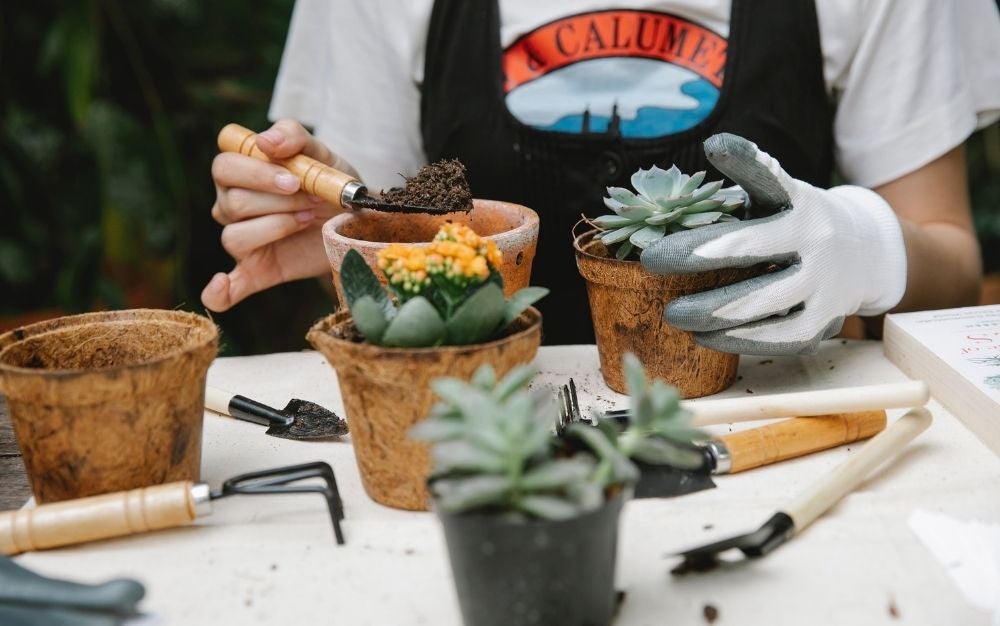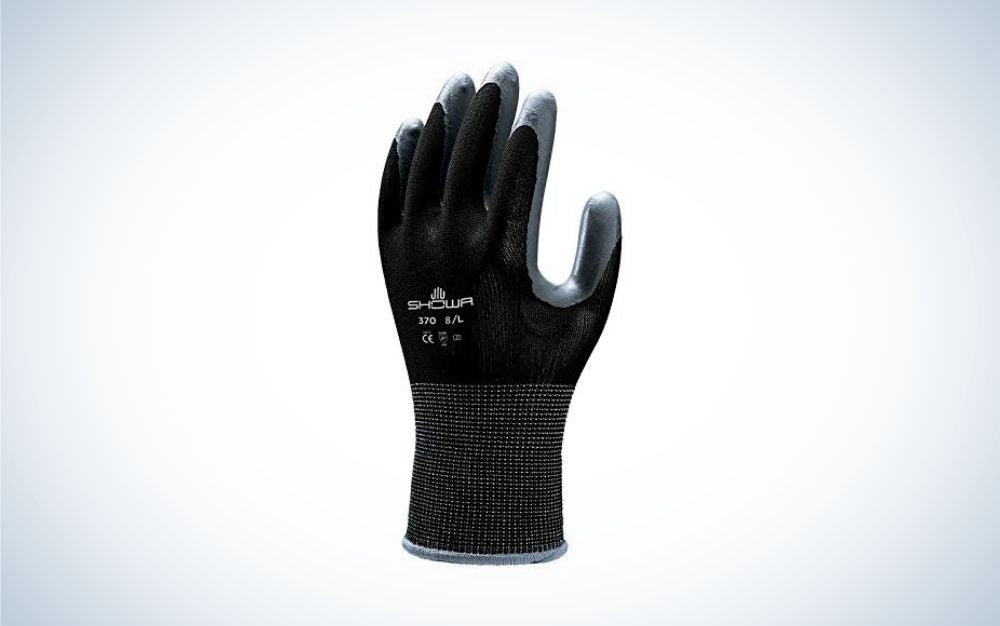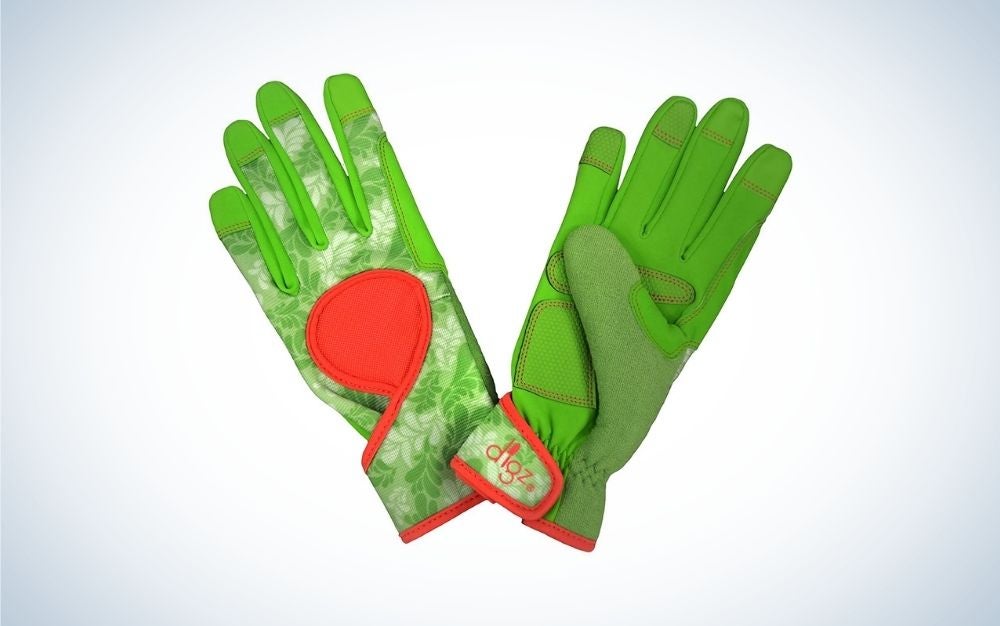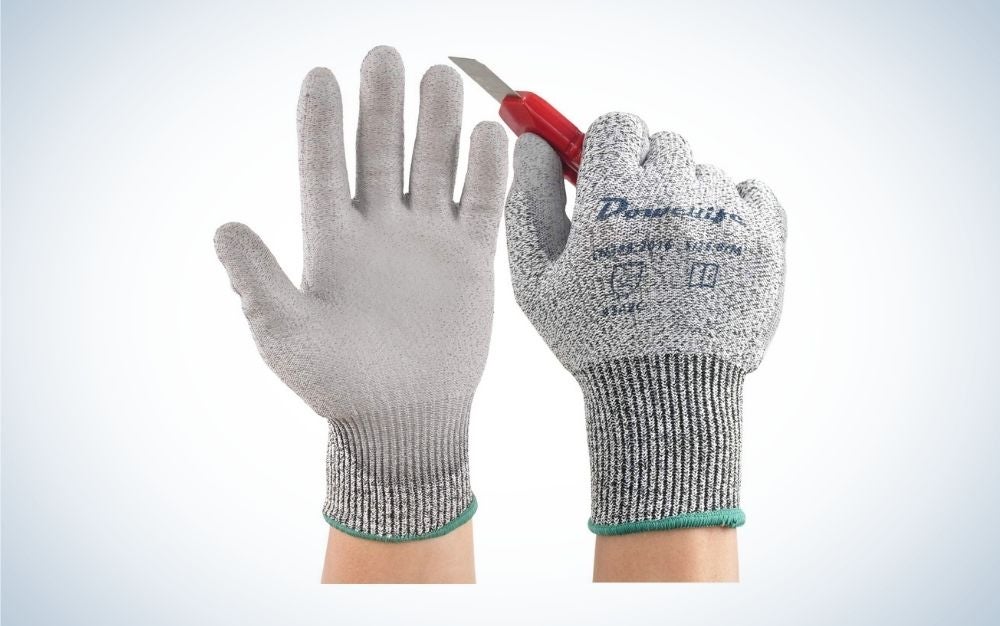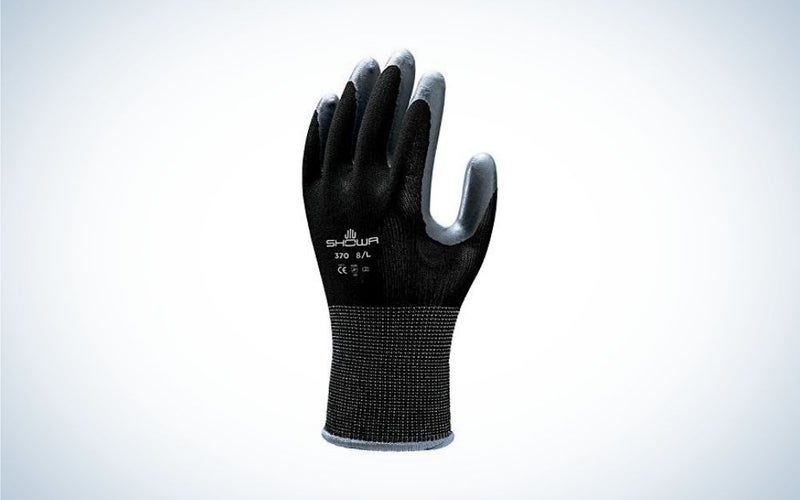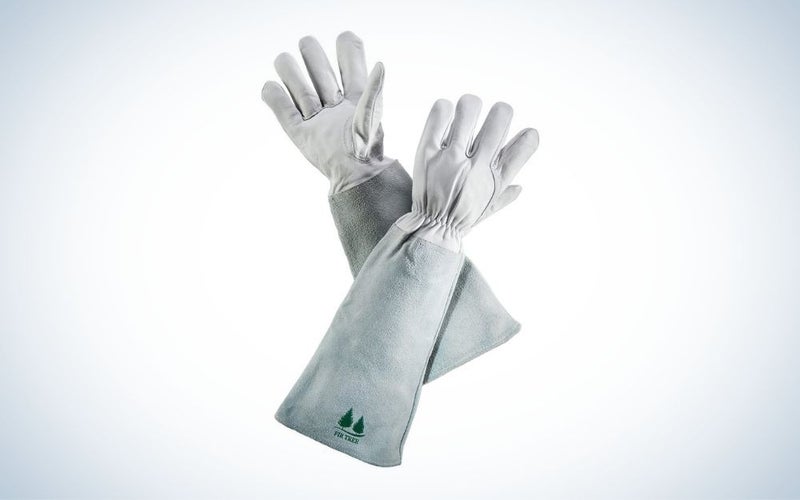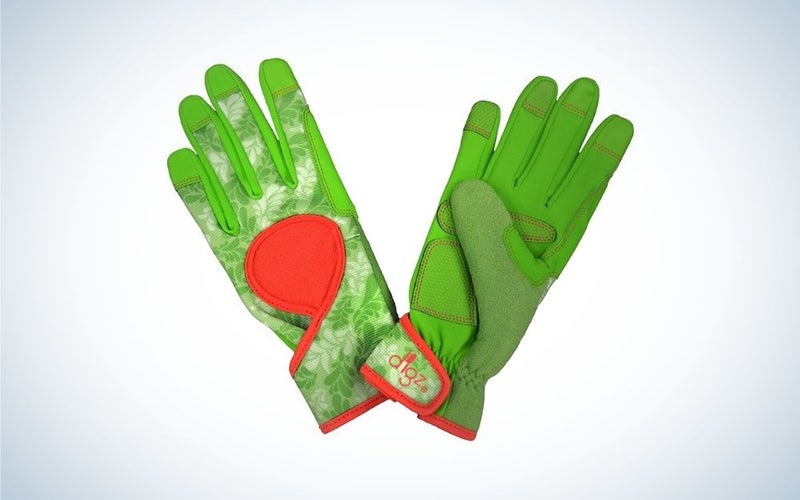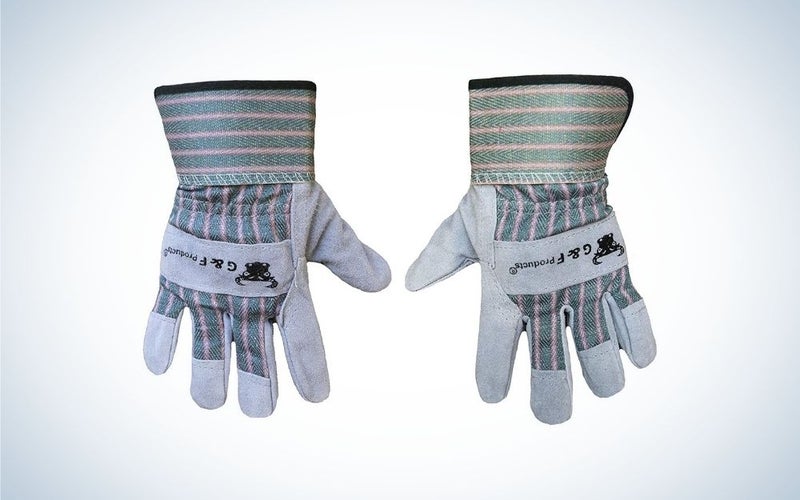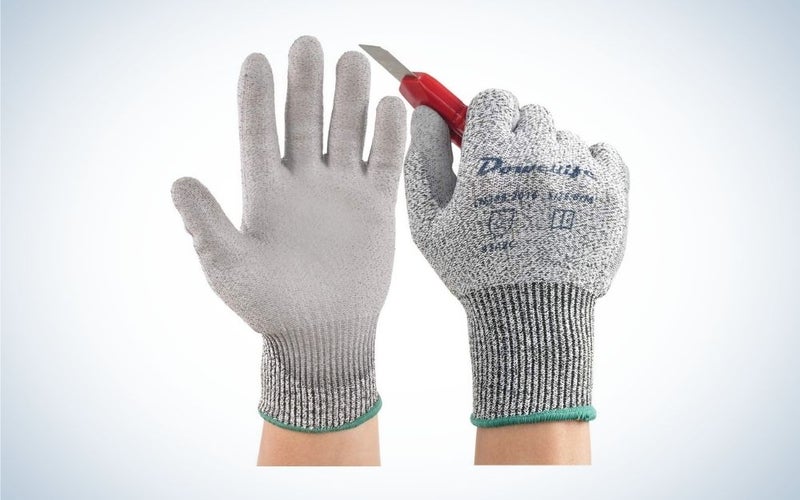We may earn revenue from the products available on this page and participate in affiliate programs. Learn more ›
With so much emphasis on gardening equipment, it’s easy to overlook the most important garden tools you have available to get your grass growing, your bushes trimmed, and your flowers in bloom: your own two hands. And the best way to ensure you get your work done without doing yourself any harm is to invest in a quality pair of the best gardening gloves. No matter what your style or work needs are, you’ll find a pair that are comfortable, functional, and ready to help keep green thumbs from getting black and blue. Here are some of the best work gloves available for every level of gardener, from novice to pro.
- Best overall: SHOWA Atlas 370BM-07
- Best for roses: Leather Gardening Gloves by Fir Tree
- Best touchscreen gloves: Digz Women’s Signature Gardening Gloves
- Best for kids: G & F Products JustForKids Kids Work
- Best budget: Dowellife Working Gloves
The best gardening gloves: Reviews & Recommendations
Best overall: SHOWA Atlas 370BM-07
SHOWA
These lightweight work gloves are close-fitting and flexible and feature a three-layer nitrile palm coating, making them great for dexterity and durability. They hold up to heat, acids, oils, and organic solvents, as well as plenty of continuous wear. A breathable back helps make them great gloves for long sessions of gardening, landscaping, car repairs, construction, and more.
Best for roses: Leather Gardening Gloves by Fir Tree
Fir Tree
Bushes stick? Well, don’t get stuck with improper protection. These leather gardening gloves offer ample hand and arm coverage, making them perfect rose gloves, as well as general-purpose protection. Sturdy goatskin for the hands and cowhide sleeves for the arms resists all punctures. And the gloves are washable, which is a huge plus. They cover up to the average person’s elbow and are available in light gray or black.
Best touchscreen gloves: Digz Women’s Signature Gardening Gloves
DIGZ
A pair of fun, bright-colored, tech-friendly gardening gloves, these mix materials that allow for durability, grip, breathability, and connectivity. Four-way spandex guarantees comfort and dexterity, plus an adjustable strap on the wrist allows for a snug fit, which is useful for keeping dirt and debris outside of the gloves. A terry cloth path on the back lets you wipe away the sweat, while those touchscreen-compatible fingertips let you swipe away alerts.
Best for kids: G & F Products JustForKids Kids Work
G & F Products
Small hands can get into big trouble if you don’t watch out. Keep your children’s hands safe and clean when they are working and playing outside by giving them these affordable, durable cotton and cowhide kids gardening gloves. Look for ones with a split-style rubberized cuff for easy on and off.
Best budget: Dowellife Working Gloves
Dowellife
Coated in ultra-thin polyurethane, these gloves are cut-resistant and durable, while their spandex and elastic nylon blended construction ensures comfort. That coated palm gives a solid grip, even in oily situations, while an extra-long but flexible cuff helps make sure there’s ample dexterity without skimping on protection.
Things to consider when buying the best gardening gloves
Gardening gloves are for more than just keeping your hands clean; they are garden equipment that offers protection from irritants such as poison ivy, guard your hands against potentially hazardous pesticides, and protect you from simple cuts and scrapes. And to make sure you get a pair that’ll do the job, it’s best to start with determining the right fit.
When shopping for the best work gloves, you’ll likely find yourself dealing with sizing charts—so it’s best to have your information in line before you dive in. First, use a measuring tape to measure your dominant hand. Start by measuring the widest part of your hand, which is the part just below your knuckles. If you are doing this by yourself, hold down the end of the measuring tape in the middle of your palm with your thumb and then wrap it around your palm, excluding the thumb. Write down that measurement in inches. Next, measure the longest part of your hand. Start by laying the measuring tape on a flat surface, then put your hand over the measuring tape with the tip of your middle finger as the highest point. Now, check on what line the base of your hand falls. Compare the two figures and get the higher value (they are likely to be close). Choose the higher one and round up to the nearest whole number. If the higher value, for example, is 7.5 inches, the final figure should be 8 inches.
After you’ve got your measurements, you’ll want to consider what kind of material might suit your garden equipment and efforts best. Leather gloves, whether natural or synthetic, are better for more rugged work, such as dealing with thorny rose bushes. Of course, they also tend to be a bit more expensive. Meanwhile, cloth gloves are made from cotton, bamboo, or knit jersey, and the breathable fabric is best for jobs that need increased touch sensitivity; you may also want to opt for a tighter fitting glove in this material. Finally, rubber gloves are waterproof and flexible and are great when you’re working with water and or chemicals. Note, however, that because they are not breathable they do make your hands sweat and can be uncomfortable after extending wearing.
With these basics in mind, you’re better prepared to pick the best gardening gloves for your workload.
Related: Gearing up for spring? These are your must-have gardening tools.
Want to protect your hands during outdoor gardening?
Neoprene or nitrile gloves are a good choice if you’re looking for a multipurpose garden glove. Both neoprene and nitrile are oil-resistant rubber compounds, and gloves coated in them form an impermeable barrier, which is ideal for working with fungicides, fertilizers, or other chemicals because. They are also lightweight and breathable, allowing good dexterity in the garden despite the thick coating. They can also help protect against sporotrichosis (also known as “rose gardener’s disease”), an infection caused by the fungus Sporothrix schenckii that can occur when handling vegetation like moss, hay, wood, or sharp-stemmed plants like roses.
Some of the pluses of nitrile-coated gloves are that they are machine washable, and they also tend to be less expensive than leather gloves and more durable than cotton gloves. For those allergic to latex, they present a good alternative as well. Unfortunately, the breathable nitrile coating can allow soil particles to seep through the surface.
Want to protect your hands and arms while pruning roses?
Caring for your rose bushes, or other thorny plants and weeds requires a different level of protection. Reaching into bushes or shrubbery can not only cut up your hands, but also your arms as well. Typically, rose gardening gloves come in a gauntlet style, which allows for both hand and arm protection. The best rose gloves will fit well, be heavy-duty, but also be flexible and comfortable. Common materials used are leathers (goatskin, pigskin, cowhide, faux leathers), as well as synthetic fabrics with stretch.
Sharp shrubs can really cause a lot of damage, so in addition to durable material look for extra padding on fingertips and palms which add extra protection. Some gloves offer adjustable toggles on the top of the glove so you can adjust for a snug fit. If you are working on clearing a large number of thorny bushes, this can be a useful feature to look for to keep stray thorns and branches out of the glove. In addition to providing protection from sharp, prickly plants, full gauntlet-style rose gloves are useful in protecting the skin from poison ivy and other skin allergy-inducing plants.
Looking for touchscreen access along with your garden gloves?
Just because you are planning a day in the garden doesn’t mean that you aren’t going to need that phone. Face it, you might not want to check work email, but important calls from friends/family and glamour shots of your horticultural handiwork are going to require your smartphone. Rather than peel off your gloves every time you want to read a text, opt for a good durable pair of gardening gloves that also offer touchscreen access.
Touchscreen glove technology is extremely convenient. Most commonly found in winter gloves, fingertip tech gloves use a conductive material on the fingertips that then allows for use of smartphones and touchscreen technology. Other tech gloves use conductive threads like silver or copper throughout the glove, which allows any part of your hand to activate the touchscreen.
Do you have kids that want to garden too?
One of the best ways to get kids interested in gardening is to get them involved early and really let them get their hands dirty. Let them have ownership over a few small tasks, like weeding or distributing seeds. Whenever possible, let them use real garden tools, because fake plastic “toy” garden tools often break or barely function, which can frustrate and turn off potentially budding gardeners. And, of course, get them a good pair of kids gardening gloves that offer similar protection and durability as adult-sized gloves, because you’ll want them to actually get involved and do some work.
Looking for a well-rated budget gardening glove?
Pricing for gardening gloves can vary wildly cloth gloves being on the lower end of the spectrum, and leather on the higher but it’s not difficult to find a pair at a reasonable price that doesn’t skimp on protection or durability. Again, you’ll want to keep in mind the type of work you’ll be doing and what kinds of plants and chemicals you’ll likely be in contact with. But for more amateur home gardens, a solid pair can be found that will do the job for under $10.
FAQs
Q: Should you wear gloves when gardening?
Yes, you should wear gloves when gardening to protect your hands. Light, easy gardening can be done with a simple pair of canvas gloves, while heavier duty or thornier garden work will require a thicker padded pair of gloves with cut and abrasion resistance. The best gardening gloves will keep your hands clean, free from cuts, scrapes, splinters, as well as any harmful bacteria, fungi, and poisonous leaves you may encounter while working in the yard.
Q: How do you clean dirty garden gloves?
How you clean your dirty garden gloves depends on what type of gloves they are and what they are made of. Basic cleaning can be done with soap and water or even spot cleaning with a small brush. Leather gloves should be cleaned with saddle soap, and a damp cloth or paper towel. Leather should be cleaned in small circular motions a little at a time without fully submerging under the water and, once dry, leather gloves can be treated with leather oils. It is recommended that all gloves be air-dried to prevent shrinkage.
Q: What are garden gloves made of?
Garden gloves are made of a variety of materials and the right material depends upon the tasks at hand. Light gardening calls for cotton gloves, while heavier duty work or work that you may encounter sharp debris and chemicals calls for nitrile, rubber, latex, and leather. For work with roses, a gauntlet-style glove in heavy-duty leather with added padding is recommended to protect not just the hand but the arm from sharp thorns.
Related: Here’s the gear that will help keep your yard lush.
The final word on the best gardening gloves
The best gardening gloves are more than just a nice accessory; they offer real protection and help you get the job done safely and efficiently. From heavy-duty polyurethane-coated work gloves to lightweight cloth gloves, there are sizes and styles for all conditions. Just keep in mind that gardening gloves are not one size fits all in any sense of the phrase you’ll want to ensure you get the right fit to avoid slippage and discomfort, and you’ll also want to invest in multiple different kinds if you see yourself switching from simple maintenance to more involved planting or renovating jobs. But, no matter what, pick up the best work gloves and don’t be afraid to get your hands dirty.
